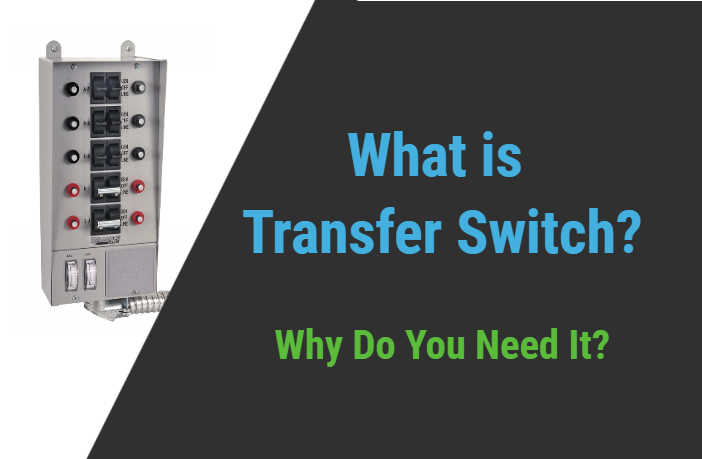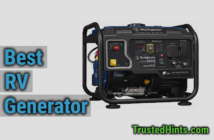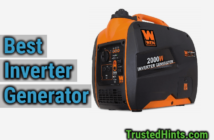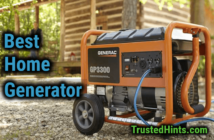If you have used any generator, then I bet you have heard about the transfer switches. A transfer switch is a very important device when running a generator to power home appliances.
So in this post, I will talk about what is a transfer switch, its types, and why you should use one.
What is a transfer switch?
A transfer switch is an electrical device that allows you to connect your generator to your house safely, and because of this arrangement, you don’t need to use extension cords whatsoever. Mainly this device is installed near the main service panel of your house so that you can control the power supply according to your needs.
Why do you need a transfer switch for Portable Generator?
Well, it depends on what type of electrical appliances you are going to run on your generator. For example, if you experience a power outage for a short time and during this outage, if you only intend to run devices like laptops and smartphones, then you don’t need a transfer switch.
But on the other hand, if you want to run appliances like a sump pump, furnace, well pump, and refrigerator which is hard-wired (they cannot be connected to a generator via an extension cord), then at that time a transfer switch becomes a very crucial device.
Moreover, if you use your generator for powering onboard devices of RV or other recreational use such as fishing, camping, or hiking then the transfer switch is not mandatory.
Other than this, there are some other aspects that play an important role when it comes to the transfer switch, let’s have a look.
1. It is required by the National Electric Code
There is a law set forth by the National Electric Code (NEC 700.5 and 701.5) according to which it is mandatory to use a transfer switch whenever you use a generator in your house. If you fail to do so, then it is considered as a code violation, and it voids the insurance of your house in case of any fire or any other emergencies.
2. It increases the efficiency of the generator
One of the biggest issues of directly running a generator is that you cannot decide which appliance you will be running in the future. For example, when the power goes out, you want to run the lights and AC. But as you know, the AC is hard-wired, and it will take forever to connect the extension cord. And trust me, this is the last thing you want to do when the power goes out.
The other example is, suppose your generator cannot run many appliances at a time and you want to switch appliances frequently. Now at that time, laying cords in your whole house is not an option.
And this procedure (power management) can be made simple by using the transfer switch. With the transfer switch, you can easily route the power from one room to another, and as you know, the transfer switch eliminates the need to use the extension cord because it is connected directly to the mains supply circuit of the house.
3. It is the safest way to connect your generator to your house
The involvement of extension cord may result in back feed, and it endangers the life of electricians working on the nearby transmission line. Back feed is an electrical phenomenon in which the power from your generator flows back to the main grid; hence, it energizes the transmission lines, which can result in electrocution.
Another big risk is a short circuit when both the power (power from the grid and power from a generator) flows simultaneously through your electrical appliances.
The transfer switch solves this problem altogether; here’s how. The transfer switch disconnects the power supply from the grid and connects the generator’s power to your house. Similarly, when the grid power supply comes back, it disconnects the generator, so there is no chance of a short circuit.
Read Also,
Types of Transfer Switches
Although there are plenty of things you need to learn about transfer switches such as open-transition, closed-transition, and delayed transition switches, but we will not go into more detail.
There are two types of transfer switches available on the market, namely manual transfer switch and automatic transfer switch. Each of these transfer switches has its advantages and disadvantages according to its application and ease of use.
Let’s take a look at both devices and decide which one you should.
1. Manual Transfer Switch
As you can probably guess, the manual transfer switch requires manual flipping of the switch when the lights go out. It’s very cumbersome to locate the switch in the event of a power outage, but on the other hand, manual switches are less expensive compared to automatic switches.
On top of that, the manual transfer switch allows you to manage your load manually throughout your house. For example, if you want to power appliances located in your second room only, then you can do that by routing power via the manual transfer switch.
2. Automatic Transfer Switch
Automatic transfer switch automatically switches the power from grid to generator upon detection of a power outage. What I like most about these automatic switches is that they can be programmed to run the most important devices during the blackout and it saves you a lot of trouble.
These awesome features and programmability come at a price. ATSs (Automatic transfer switches) are more expensive than manual transfer switches but given their convenient features and easy operation, I would say it’s worth every penny.
What you look for when buying any transfer switch?
If you own a portable generator, then we advise you to use a transfer switch. When selecting any transfer switch, there are some things you need to consider so you can make a better buying decision. Here we have put together a list of those things, enjoy.
1. Type of transfer switch
This is the first thing you need to look at when selecting any transfer switch. I have already explained the types of transfer switches above. If you don’t mind spending extra money for comfort, then you can choose the automatic switch, but if you have a limited budget, then it is better to opt-in for a manual switch.
Comprehensive kits
As you probably know, the installation of any transfer switch requires a lot of tools and wires, and most people don’t have these types of tools at their homes.
So if you have don’t have the required tools at the time of installation, then you will get stranded. So it is better to check if your selected transfer switch comes with the required kit to make the installation process quick and efficient.
2. Wattage rating
Please note that any particular transfer switch can handle wattage up to the limit it is rated for. If you try to run a higher wattage generator on your transfer than it is rated for, then it will be short-circuited.
So when choosing any transfer switch, you need to determine how many watts of generator you have. You can check it easily on the instruction manual of your generator, and also we advise you to check the running watts as well as starting watts of the generator too for better estimation.
3. UL/CUL certifications
Almost all the transfer switch manufacturers have UL/CUL certification, which follows the strict rules set forth by the national electric code. But to be on the safe side, it is better to check if your selected transfer switch has such ratings or not.
4. Warranty
No matter how fancy any transfer switch is but if it does not have a decent warranty, then no one is going to buy it. There is no telling when the electrical device may fail, so we encourage you to purchase the transfer switch from a reputable brand with a solid warranty. Check out the reviews of the best inverter generators.





2 Comments
I bought Go Power and install for my power transfer switch for controlling my RV’s Shore, Generator, and future Solar Power in conjunction with installing an external power In-Let port. After taking my measurements and deciding where all the components would go, I got started. A few of my main concerns was where to keep the transfer switch internally save and clean and how to get the current main power cord to travel from the Surge Protector (which I installed a few years ago) out to the side of the RV. I didn’t want to have it exposed to the road elements of road dirt, water, and especially road debris that could be snagging it apart. All of it looks great, works well, and gives my RV a nice updated newer look.
I purchased a Xantrex switch so I can run my aquariums off of Solar or AC Power. I connected the AC wire to an Alexa Enabled WIFI Outlet, then AC power, the other cord plugged into my Inverter which is connected to a battery and Solar panel. I can switch from AC Power to Solar anytime I want through my cellphone and the aquarium lights, filters, air pumps don’t even flinch. As soon as I beef up my solar system, I will just run it off the solar panels and let it switch to AC when the Solar battery goes dead and the inverter alarm goes off. I’ll have to test it, as I don’t know if that would trigger it to switch over.